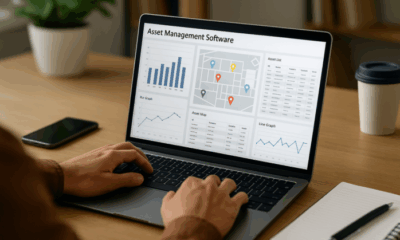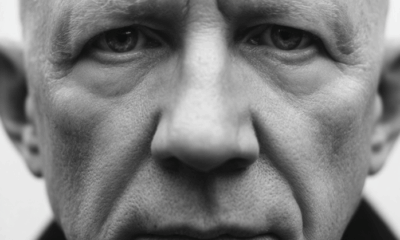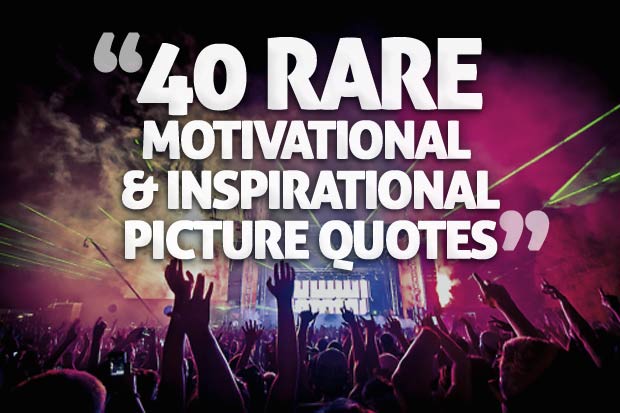Life
How to Get the Most Out of Your Planner and Have the Most Organized Year

If you’re anything like me, you have a busy life and an overwhelmed and forgetful mind. Between managing work, sports and/or hobbies, maybe you’re still in school as well, perhaps you have children and a family, and let’s not forget about your often overridden attempt at a social life, you probably find yourself misplacing lists and items and forgetting tasks often. As long as you haven’t forgotten to pick up the kids yet, I’d say you’re doing pretty well at managing your day-to-day routine so far. However, it’s time to admit, a little organizational help couldn’t hurt.
You’ve got pages of emails to get through, piles of notes and lists, a grocery list for later today somewhere on your desk, and there was definitely something else you were supposed to remember to do later today. Wait…what time was that conference call scheduled for? The only thing more important than an organized workspace is an organized mind; the best way to achieve an organized mind is to utilize a planner to organize it for you.
I hear and see questions all the time like, “How do you stay on task while working from home?” or “How do you keep yourself motivated?” and “How do you manage to get everything done without feeling stressed and overwhelmed?” To be honest, I do feel stressed and overwhelmed on occasion. But, my answer is always the same, I use a planner; and I actually check it multiple times a day.
So, here are a few tips, suggestions, and things to remember for utilizing your planner for everything it has to offer and living your most organized and well-planned year:
Setting Up Your Planner
Before the new year even begins, you will have the task of choosing and setting up your planner. Personally, I lean towards the planners with all the extra bells and whistles. For example, numerous “notes” sections, stickers, a yearly view (monthly and weekly views are a necessity for your planner, not an accessory), a section to add lists, to-do’s, or goals, bullet journal pages, and so on. If you don’t believe these supplementary items and pages are essential for you or you don’t think you’ll use them, go with a more simplistic or minimalist design.
After you’ve chosen your planner, the first thing you’ll want to to is flip through each month and add in birthdays, holidays, planned trips and vacations, and of course, your yearly goals. Write down your goals as a reminder. If they’re written down they’ll be more difficult to ignore.
“Productivity is never an accident. It’s the result of a commitment to excellence, intelligent planning & focused effort.” – Paul Meyer
This “set-up process” is the perfect opportunity to add things into your accessory sections as well. Be creative and make these sections whatever you’d like. I use my notes section in the back of my planner for important usernames and passwords as well as notes like my frequent flyer and Hilton Honors number.
I have another section of twelve blank boxes which I use to write down my to-do list or goals for each month. I haven’t put anything on the bullet journal pages yet, however, I love this section because you’re free to be extremely creative and make this whatever you want. Track your budget, manage your routine, draw a map and mark places you’ve travelled to; your options are endless.
As You Go
As the days, weeks, and months go on this year, continue adding everything into your planner.
- Goals and to-do’s for the month
- Appointments and meetings
- Reminders
- Daily tasks and to-do’s (These can be household chores such as grocery shopping, cleaning, or kids’ athletic events and activities, work, or school related.)
WRITE EVERYTHING DOWN! This is the most important responsibility on your part and the sole purpose for your planner. No matter how minute a reminder or task seems, your planner can’t do its job if you don’t do yours. If you want to receive each benefit your organizer has to offer, utilize every aspect of it.
Side note: There’s nothing more motivating than checking off items on your to-do list or completing goals.
“If you have a goal, write it down. If you do not write it down, you do not have a goal, you have a wish.” – Steve Maraboli
Tips, suggestions, and other ideas to help you get the most out of your planner:
- Color-code. Travel and vacation can be one color, personal appointments another, kids’ activities another, and social events, parties, and dinners can have a designated color. Color-code in a way that is clear and easy for you to follow and comprehend.
- Add stickers, different fonts, highlight, add pictures, or drawings to emphasize certain notes and plans.
- Be very detailed. Like I mentioned before, write everything down and be extremely clear. You never know what you might remember and what might slip your mind. So, make sure you write a clear reminder of what you’re expecting from yourself.
- Utilize every section of your planner in any way that you need and will work best for you.
- Have regular (daily or weekly) planning sessions where you can write down your to-do lists, tasks, and/or goals for the day or week.
- Use a single planner for everything! Don’t try to bounce between multiple planners for school, work, etc.
- Have a routine for checking your planner and setting your planning sessions. I keep my planner next to me at my desk and refer back to it multiple times a day. I also plan my schedule for the following week every Friday.
There you have it, my secret to staying on task, productive, and motivated while successfully managing my busy schedule. You now have all the tools you need for your most productive, organized, and well-planned year. Conveniently and efficiently manage your tasks, goals, and schedule all in one place.
Do you use a planner? How has it helped you? Comment below!
Image courtesy of Twenty20.com
Life
10 Research-Backed Steps to Create Real Change This New Year
This New Year could finally be the one where you break old patterns and create real, lasting change.

Every New Year, we make plans and set goals, but often repeat old patterns. (more…)
Life
9 Harsh Truths Every Young Man Must Face to Succeed in the Modern World
Before chasing success, every young man needs to face these 9 brutal realities shaping masculinity in the modern world.

Many young men today quietly battle depression, loneliness, and a sense of confusion about who they’re meant to be.
Some blame the lack of deep friendships or romantic relationships. Others feel lost in a digital world that often labels traditional masculinity as “toxic.”
But the truth is this: becoming a man in the modern age takes more than just surviving. It takes resilience, direction, and a willingness to grow even when no one’s watching.
Success doesn’t arrive by accident or luck. It’s built on discipline, sacrifice, and consistency.
Here are 9 harsh truths every young man should know if he wants to thrive, not just survive, in the digital age.
1. Never Use Your Illness as an Excuse
As Dr. Jordan B. Peterson often says, successful people don’t complain; they act.
Your illness, hardship, or struggle shouldn’t define your limits; it should define your motivation. Rest when you must, but always get back up and keep building your dreams. Motivation doesn’t appear magically. It comes after you take action.
Here are five key lessons I’ve learned from Dr. Peterson:
-
Learn to write clearly; clarity of thought makes you dangerous.
-
Read quality literature in your free time.
-
Nurture a strong relationship with your family.
-
Share your ideas publicly; your voice matters.
-
Become a “monster”, powerful, but disciplined enough to control it.
The best leaders and thinkers are grounded. They welcome criticism, adapt quickly, and keep moving forward no matter what.
2. You Can’t Please Everyone And That’s Okay
You don’t need a crowd of people to feel fulfilled. You need a few friends who genuinely accept you for who you are.
If your circle doesn’t bring out your best, it’s okay to walk away. Solitude can be a powerful teacher. It gives you space to understand what you truly want from life. Remember, successful men aren’t people-pleasers; they’re purpose-driven.
3. You Can Control the Process, Not the Outcome
Especially in creative work, writing, business, or content creation, you control effort, not results.
You might publish two articles a day, but you can’t dictate which one will go viral. Focus on mastery, not metrics. Many great writers toiled for years in obscurity before anyone noticed them. Rejection, criticism, and indifference are all part of the path.
The best creators focus on storytelling, not applause.
4. Rejection Is Never Personal
Rejection doesn’t mean you’re unworthy. It simply means your offer, idea, or timing didn’t align.
Every successful person has faced rejection repeatedly. What separates them is persistence and perspective. They see rejection as feedback, not failure. The faster you learn that truth, the faster you’ll grow.
5. Women Value Comfort and Security
Understanding women requires maturity and empathy.
Through books, lectures, and personal growth, I’ve learned that most women desire a man who is grounded, intelligent, confident, emotionally stable, and consistent. Some want humor, others intellect, but nearly all want to feel safe and supported.
Instead of chasing attention, work on self-improvement. Build competence and confidence, and the rest will follow naturally.
6. There’s No Such Thing as Failure, Only Lessons
A powerful lesson from Neuro-Linguistic Programming: failure only exists when you stop trying.
Every mistake brings data. Every setback builds wisdom. The most successful men aren’t fearless. They’ve simply learned to act despite fear.
Be proud of your scars. They’re proof you were brave enough to try.
7. Public Speaking Is an Art Form
Public speaking is one of the most valuable and underrated skills a man can master.
It’s not about perfection; it’s about connection. The best speakers tell stories, inspire confidence, and make people feel seen. They research deeply, speak honestly, and practice relentlessly.
If you can speak well, you can lead, sell, teach, and inspire. Start small, practice at work, in class, or even in front of a mirror, and watch your confidence skyrocket.
8. Teaching Is Leadership in Disguise
Great teachers are not just knowledgeable. They’re brave, compassionate, and disciplined.
Teaching forces you to articulate what you know, and in doing so, you master it at a deeper level. Whether you’re mentoring a peer, leading a team, or sharing insights online, teaching refines your purpose.
Lifelong learners become lifelong leaders.
9. Study Human Nature to Achieve Your Dreams
One of the toughest lessons to accept: most people are self-interested.
That’s not cynicism, it’s human nature. Understanding this helps you navigate relationships, business, and communication more effectively.
Everyone has a darker side, but successful people learn to channel theirs productively into discipline, creativity, and drive.
Psychology isn’t just theory; it’s a toolkit. Learn how people think, act, and decide, and you’ll know how to lead them, influence them, and even understand yourself better.
Final Thoughts
The digital age offers endless opportunities, but only to those who are willing to take responsibility, confront discomfort, and keep improving.
Becoming a man today means embracing the hard truths most avoid.
Because at the end of the day, success isn’t about luck. It’s about who you become when life tests you the most.
Change Your Mindset
The Four Types of Happiness: Which One Are You Living In?
Most people chase success only to find emptiness, this model reveals why true happiness lies somewhere else.

In a world driven by rapid technological growth and constant competition, many people unknowingly trade joy for achievement. (more…)
Change Your Mindset
The Secret Daily Routines Behind History’s Most Brilliant Thinkers
Uncover the daily rituals and hidden habits that powered history’s most brilliant minds to success.

Why Daily Rituals Matter
Every great achiever has one thing in common: discipline. Behind the novels, inventions, discoveries, and masterpieces are small, consistent habits repeated daily. (more…)
-

 Change Your Mindset4 weeks ago
Change Your Mindset4 weeks agoThe One Leadership Habit That Separates the Great From the Forgettable
-

 Personal Development4 weeks ago
Personal Development4 weeks agoThis Silent Habit Might Be Sabotaging Your Career
-

 Business3 weeks ago
Business3 weeks agoWhy Your E-Commerce Fulfilment Is Probably Broken (And How to Fix It)
-

 Shift Your Mindset3 weeks ago
Shift Your Mindset3 weeks ago11 E’s That Define Every Great Leader And Why Most People Miss Them
-

 Did You Know2 weeks ago
Did You Know2 weeks agoThe Success Patterns You Inherited (And Didn’t Notice)
-

 Business2 weeks ago
Business2 weeks agoThe Hidden Money Pit in Your Operations (and How to Use It)
-

 Entrepreneurs1 week ago
Entrepreneurs1 week agoThe Essential Skills Every Entrepreneur Needs In 2026
-

 Change Your Mindset7 days ago
Change Your Mindset7 days agoHow to Turn Your Mind Into Your Greatest Asset (Instead of Your Enemy)


























